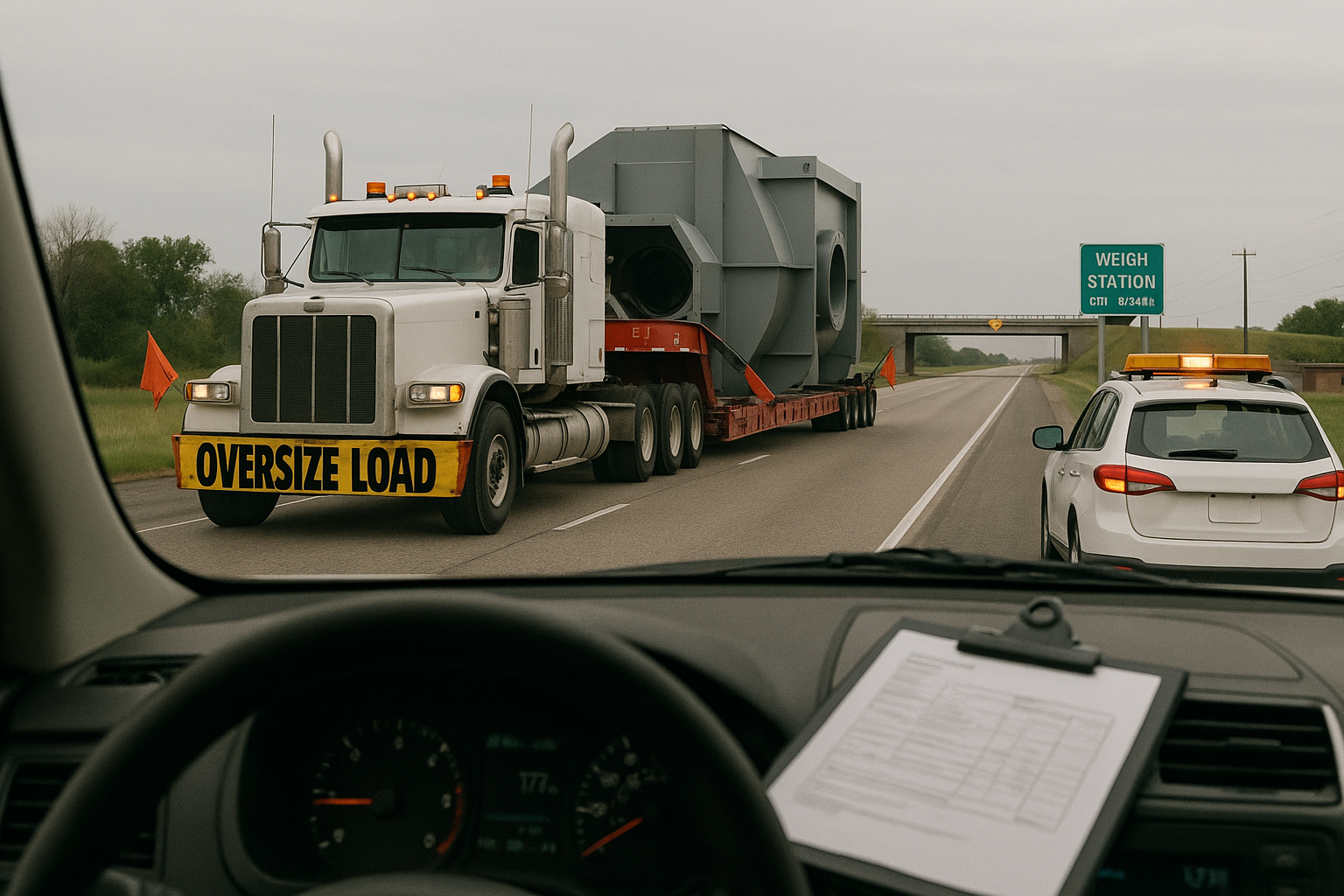What is considered oversize load? On the surface, it appears to be a straightforward question. You check a few dimensional thresholds—height, width, length, weight—and if your vehicle or cargo exceeds those, you’re in oversize territory, right? Well, not so fast. In reality, what is considered oversize load gets murky when we move beyond textbook dimensions and into real-world conditions—temporary setups, equipment configurations, shifting weight distributions, multi-jurisdiction hauls, and composite cargo units.
At Reliable Permit Solutions, this isn’t just a classification issue—it’s the pivotal decision that determines whether a client needs permits, escorts, route analysis, or more. In this post, we’ll dissect the gray areas of load classification and help you navigate the edge cases where the definition of what is considered oversize load isn’t so clear.
The Standard Starting Point: What is Considered Oversize Load in Most Scenarios
Most U.S. states align with basic dimensional benchmarks to define what is considered oversize load:
- Width: Over 8 feet 6 inches
- Height: Over 13 feet 6 inches
- Length: Varies, but often over 53 feet for trailers
- Weight: Over 80,000 pounds gross, or 20,000 pounds per axle
These are the starting points. If your vehicle-load combo exceeds one or more, it’s probably oversize—probably. Because as every logistics professional knows, the answer to what is considered oversize load depends on a lot more than just raw numbers.
When the Thresholds Blur: Exceeding One Dimension but Not Others
What if your load is 8’10” wide, but only 12 feet tall and well under weight limits? Is it still oversize? Technically yes. But here’s where the headache starts—many states and municipalities have different tolerances, and enforcement may depend on load type, road classification, or even time of day.
Reliable Permit Solutions regularly sees cases where carriers aren’t sure whether they need a permit or not. Our answer: when in doubt, verify it. Because misunderstanding what is considered oversize load can mean costly fines, delays, and safety issues.
Temporary Configurations and Modularity: Do They Count?
Loads with detachable or retractable elements often fall into regulatory limbo. For instance, if a boom on a crane can be folded but isn’t during transit, are you oversize? What if the equipment can be collapsed but isn’t due to operational needs?
In these edge cases, what is considered oversize load depends on the configuration at the time of transport—not potential configurations. Carriers must document their configurations carefully and understand how modular equipment plays into dimensional limits.
Weight Distribution: The Hidden Complexity of Axle Loading
You can meet gross vehicle weight limits and still be oversize if you overload an axle. The way weight is distributed across the axles affects bridge laws, turning radius, and road wear. So, what is considered oversize load isn’t just about “how much,” but “how it’s carried.”
That’s why Reliable Permit Solutions evaluates not just overall weight, but weight per axle, load center of gravity, and stress on suspension systems when advising clients on permitting.
Jurisdictional Differences: Fifty States, 2,500+ Interpretations
One of the biggest reasons what is considered oversize load gets so complicated is jurisdictional variation. A 12’6″ wide combine harvester might require permits in Missouri but not in parts of North Dakota. Bridge limits, county-specific road ordinances, and seasonal restrictions make the answer frustratingly fluid.
We stay on top of those variations. Reliable Permit Solutions taps into a proprietary regulatory database that tracks standards and exceptions across states, cities, counties, and tribal jurisdictions. Our clients don’t have time to decode every local rule—and we don’t expect them to.
Measurement Methodology: From Where Are You Measuring?
Did you know what is considered oversize load can change depending on how and where you measure? Are you including the mirror extensions? The flag holders? The protrusions that technically fold in during transport?
Measurement methodology matters, and different states use slightly different guidelines for what counts toward the total. Even the slope of the measurement surface can matter in height restrictions.
Beyond the Basics: Combined Loads and Equipment Modifications
Combo loads like wind turbine blades paired with extended trailers or heavy machinery strapped on modular flatbeds are notorious for classification headaches. Here, the blend of load and vehicle becomes one unit—and what is considered oversize load must be assessed holistically.
Similarly, adding toolboxes, after-market bumpers, or auxiliary tanks can push you into oversize territory without you realizing. Carriers need to assess every modification before determining classification.
When to Call the Experts
If you’re operating in any of these gray zones, it’s time to bring in specialists. Reliable Permit Solutions offers more than just paperwork—we provide strategic regulatory insight. Our team handles nuanced classification analysis, route compliance, and permitting for all 50 states.
When the line between legal and oversize isn’t obvious, don’t guess. What is considered oversize load may seem simple—but in logistics, simplicity is the exception, not the rule.
In Summary
What is considered oversize load is a question that demands more than a tape measure and a Google search. From temporary configurations to axle loads, regional quirks to measurement methodology, there are dozens of factors that can shift a load from standard to oversize—and often, it’s not black and white. Reliable Permit Solutions is your partner in decoding that gray area, ensuring every haul is compliant, efficient, and secure.
Let’s make complexity manageable. When in doubt, let us figure out what is considered oversize load—and what to do about it.

